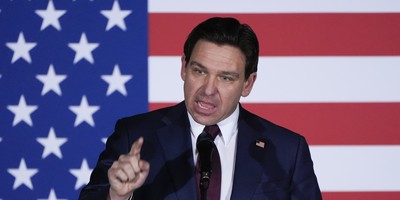Flashbacks: Wrong on Gold
Late last year when gold was perilously close to dipping below $1,000 and continuing the bear slide from 2011 highs, the financial press was abuzz with gold-bashers’ gloom and doom forecasts for the yellow metal. But gold fought back early this year, and despite all efforts by the powers that be to suppress it now knocks on the door of $1,300 and possibly higher. How wrong the naysayers were!
How wrong? Well, flashbacks to comments from major financial institutions last year tell the story.
As early as November of last year, Citi Research predicted softer gold in 2016, though the bank didn’t go so far as to say there would be outright capitulation. “Given weak price performance in 2015 and strong USD sentiment, investors may continue to reduce gold exposure and look for returns in equities and bond markets,” Citi Research said. “However, as has been the case in 2015, we expect continued macro risk concerns, plus a supportive physical market to prevent outright price capitulation next year. We expect prices to average $995/oz in 2016,” said Citi Research. The bank’s price target for gold was pegged at an average of $995 an ounce in 2016, before improving to $1,025 in 2017 and $1,200 in 2018.
Recommended
Also in November, when gold fell to its lowest point since 2010, London’s Natixis precious metals analyst Bernard Dahdah said that expected higher interest rates “increases the opportunity cost of holding gold...Gold has zero yield — it actually costs you money to hold it — so there’s more incentive to put your money into a yield-earning dollar investment.”
In December, Deutsche Bank predicted gloom and doom for gold, expecting it to average around $1,033 an ounce this year. The bank noted that gold often surges in times of high-risk crisis but said gold’s safe haven appeal rarely lasts long. “Such risks are unpredictable by nature, but what is interesting from our decidedly unscientific aggregation of the response of gold prices to various risk events in recent memory is to note that while gold prices may rise acutely by as much as 15%, the price impact after 25 trading days is much less apparent,” they said.
Credit Agricole’s December crystal ball saw gold facing headwinds from the get-go this year. “Gold prices should remain under pressure at the start of 2016, suffering from further strengthening of the USD in the early stages of the Fed tightening cycle,” said Credit Agricole. “We also expect that the still subdued outlook for global inflation should dampen demand for gold as an inflation hedge.”
Bank of America Merrill Lynch analyst Michael Widmer said in early December, “There are still good reasons to be bearish on gold, at least in the first half of the year.” The bank didn’t expect another 30% drop in gold for the coming year, but said the first half of 2016 would be weak. Their price target for the year was $1,088 an ounce, with expectations that gold could drop below $1,000 in the first quarter.
ABN Amro was one of the gloomiest forecasters for gold back in December. “We expect investors to continue to liquidate positions in the months ahead because of a higher U.S. dollar and higher U.S. rates. It is likely that new lows in prices will be reached before the end of the first quarter of 2016,” the bank’s analysts said in a report. “We expect the Fed to raise rates very slowly in 2016, but even this scenario is not priced into markets. A rise in U.S. Treasury yields should push gold prices towards USD900 per ounce or even below in 2016 mainly because of investor position liquidation,” they added.
The bank brushed aside gold’s safe haven role in times of crisis. “Gold prices may be supported in waves of risk aversion. However, when there is systemic risk in financial markets it will not behave as the ultimate safe haven asset. For example, at the height of the global liquidity crisis (when there was a shortage of liquidity) gold prices dropped sharply because investors valued cash more than gold,” they said.
By February of this year, ABN Amro admitted its misguided outlook for gold and raised its target price for 2016 from $900 to $1,300. “Having been long-standing bears we have now turned bullish on precious metal prices,” the bank explained.
Of course, gold perma-bear Goldman Sachs predictably knocked gold’s chances for 2016 (a position they’re still doggedly holding onto even though gold has been the top-performing investment asset this year). Early in December, Goldman declared that “we maintain our $1,000 per ounce gold price forecast over the next 12 months.”
Among the forecasters with sharper vision to see the real future of gold, in December of last year HSBC, UBS, Commerzbank, Capital Economics and the World Gold Council predicted improving fortunes for gold in 2016.
U.S. Mint Sold Twice as Many American Eagle Gold Coins in 2016 vs. 2015
Over the first four months of 2016, the U.S. Mint sold 351,000 ounces of Gold American Eagle coins, exactly double the 175,500 ounces sold in the first four months of 2015. The gain in April was much larger. In April 2015, the Mint sold 29,500 ounces of Gold American Eagles. This April, the Mint sold 105,000 ounces of Gold American Eagles, an increase of 256%. Silver American Eagle sales were up more moderately (27%) from 14,922,000 in the first four months of 2015 to 18,914,500 ounces this year.
It’s important to remember that when investors turn to gold and silver bullion coins, they often become interested in classical American gold and silver numismatic coins, too. In addition, great interest will be focused on U.S. paper currency in the next few months with the emergence of the Harriet Tubman $20 bills, as well as selected Civil Rights figures on the back of Lincoln’s $5 bill, and American suffragettes on the reverse of Hamilton’s $10 bills. For the time being, partly due to the popularity of the Broadway musical “Hamilton,” his face is now safe. As the Wall Street Journal put it, “Alexander Hamilton dodged the bullet this time.”
Gold is Rising
Gold approached $1300 last Friday on a weaker dollar, a weaker U.S. economy (with the first-quarter GDP up only 0.5%), negative interest rates in many economies and negative “real” (after inflation) rates in the U.S. Through the end of April, gold is up 22% and silver is up 29% year-to-date. Meanwhile the major stock indexes are up only 1% and 2%. The tech-heavy NASDAQ index is down 5.5% so far this year. Gold reached $1304 on Monday morning before pulling back. There is usually some resistance at a big new round number. However, if gold closes over $1300 several times, it should start moving higher.

























Join the conversation as a VIP Member